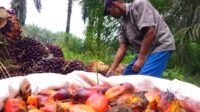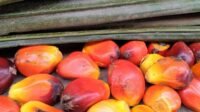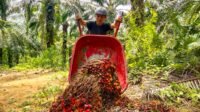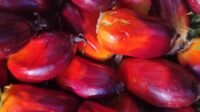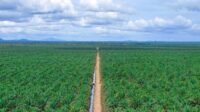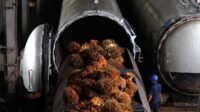PALMOILMAGAZINE, BANDUNG – During a workshop attended by Palmoilmagazine.com in Bandung on Thursday (1/2/2024), Sahat Sinaga, the Chairman in duty of the Indonesian Palm Oil Board (IPOB), addressed common misconceptions regarding palm oil downstream sectors, particularly its association with palm cooking oil.
Sinaga explained that despite the belief that crude palm oil (CPO) experiences nutrient loss during the process of becoming palm cooking oil due to high temperatures, factual evidence contradicts this assumption. CPO retains significant amounts of β-carotene, tocopherol, and tocotrienol. β-carotene serves as a source of vitamin A and functions as an antioxidant, while tocopherol and tocotrienol contribute to vitamin E and antioxidant effects.
A noteworthy revelation by Sinaga was that palm oil can generate vitamin A at a rate 15 times higher than that of carrots and vitamin E at a rate twenty times higher than olive oil. Despite the higher cost of olive oil compared to palm oil, the concentration of vitamin E in palm oil surpasses that in olive oil.
Also Read: Vitamin E: An Essential Nutrient in Palm Oil with Significant Concentration
He also told that many might not know that palm oil is the one of vegetable oil which is similar to breast milk. Within C18, Octadecenoic Acids reaching 36,3 percent, palm oil has the mainstay that other vegetable oils do not have.
Palm oil downstream sectors within nowadays technology deliver the positive for the industries. In 2023, they reached US$ 62,9 billion with the exports about US$ 38,4 billion, in the domestic they reached US$ 21,4 billion, and biomass reached US$ 3,1 billion. Though they escalated, palm oil industrial performance was not as good as Malaysia for the country has had about 260 derivative products.
“Downstream products were only 54 in 2007 but escalated to be 179 products in 2023. There would be many chances to develop and increase revenue from our palm oil,” Sinaga said.
He also told it needs special board to optimize palm oil industrial progress. This is crucial so that the regulations would not be overlapping and blocking the progress. Besides, he continued, security and stable regulations in Malaysia support their palm oil industrial progress.
Innovative process to get palm oil products would deliver business profits up to US$ 107,02 billion in 2028 within 70,1 percent progress. The successful key, he thought, is by involving smallholders in replanting program that should lay on about 485.000 hectares per year and take advantage on abundant biomass.
By these strategic ways and right support, palm oil industries in Indonesia would have the big potential to keep growing and contributing significantly for the economy in this country. (T2)















